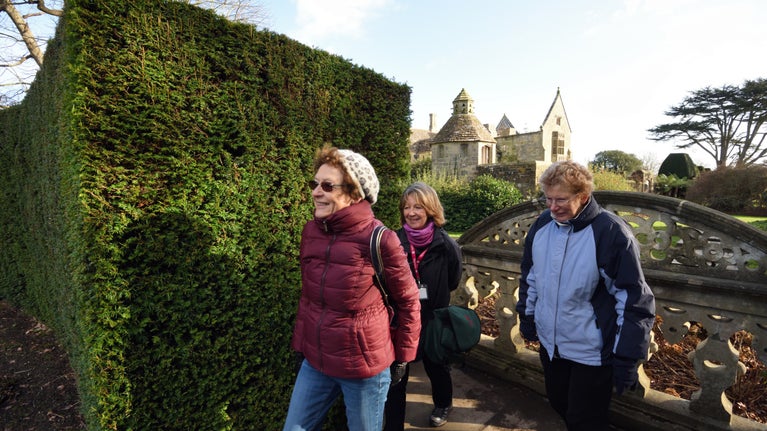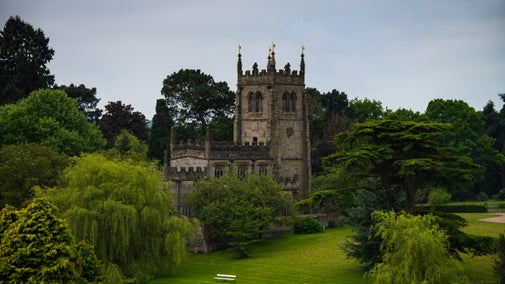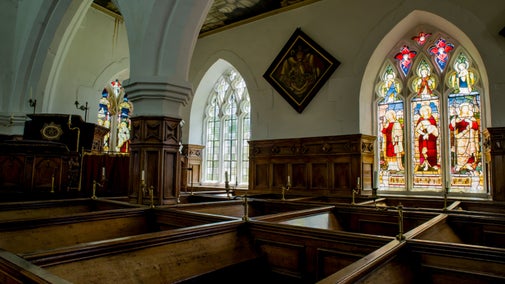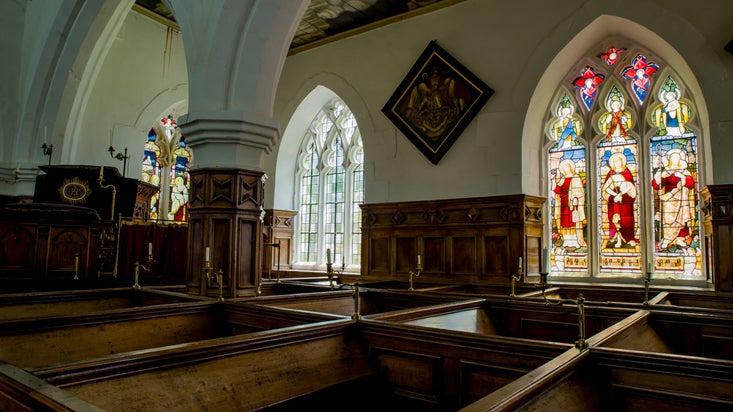
Where will you visit next?
Discover lots of gardens, historic houses, days out at the coast and more.
Imposing church built in 1653, with fine panelled interior
Staunton Harold Estate, Ashby-de-la-Zouch, Leicestershire, LE65 1RW

| Asset | Opening time |
|---|---|
| Church | Closed |
Staunton Harold Church is open on weekends from Saturday 8 to Sunday 16 November, as part of the Artisan Fair event. To explore the church, you'll need to book a ticket to the Christmas Artisan Show at Staunton Harold Hall.
Assistance dogs are welcome in the church.
Parking is in the main visitor car park for the Ferrers Centre - the walk to the church is approximately 5 - 10 minutes.
Toilets (not National Trust), 500 yards from Church. Step to entrance, ramp available. Ground floor has steps.
It may be possible to drop off visitors closer to the church, by prior arrangement only.
A portable induction loop is available, on request in advance of a tour.
Ramped access can be gained into the church upon request.
Visitors are welcome to sit in the wooden pews.
Only the ground floor of the church is open for public access. There is a low step into the church. The church floor is historic flagstones and can be uneven in places. There are two steps in the chancel in front of the alter and low steps into the pews.
Staunton Harold Estate, Ashby-de-la-Zouch, Leicestershire, LE65 1RW
Discover what accessibility features we have at Staunton Harold Church to help you enjoy your visit.

Uncover the rebellious history behind this lavish church on a guided tour. Hear stories of the Shirely family who built the church, get up-close to its striking gothic architecture and learn how it became a symbol of defiance.

Imposing 17th-century church built in 1653, with a fine panelled interior.
Uncover the rebellious history behind this lavish church on a guided tour. Hear stories of the Shirely family who built the church, get up-close to its striking gothic architecture and learn how it became a symbol of defiance.

Discover Staunton Harold Church, a rare and important church, which tells the tales of a turbulent time in English history.


A former gatehouse to Calke Abbey, this cottage now stands in a peaceful backwater.

A cosy cottage packed full of character features and with stunning views over the Calke Estate.

The perfect get-together pad with seven bedrooms, a large garden and miles of parkland walks.
Sorry, there are no upcoming events at this place
Staunton Harold Church rises above a lake whose tranquil waters reflect the beauty of north-west Leicestershire’s gently rolling hills. It is a picture of rural peace and contentment. But you need not look far to find a very different story from England’s most turbulent times.
Built in 1653 on the instructions of Sir Robert Shirley Fourth Baronet, this is a rare building of its time, an era known as the Commonwealth Period, when Oliver Cromwell was Lord Protector of England.
Building this chapel was Sir Robert’s way of standing up for ‘all thinges sacred’ as he saw it: the High Anglican Church and the God-given right of the monarch to rule.
Staunton Harold Church, or the Chapel of the Holy Trinity as it is also known, is a fine example of Gothic style, which continued into the middle of the seventeenth century. The oak box pews and wood panelling are made from local oak by the Melbourne joiner William Smith. William also created the pulpit, the Jacobean-style panelling in the chancel and the original chancel screen which now stands beneath the organ loft.
Discover the fascinating history of the Chapel of the Holy Trinity at Staunton Harold and how building the Chapel cost Sir Robert Shirley his life.

Over the last few years, we've undertaken essential building and repair works at the church, to ensure that this place of reflection can be enjoyed for many years to come.

Explore the objects and works of art we care for at Staunton Harold Church on the National Trust Collections website.


Discover lots of gardens, historic houses, days out at the coast and more.
By sharing your email address you’re agreeing to receive marketing emails from the National Trust and confirm you’re 18 years old or over. Please see our for more information on how we look after your personal data.